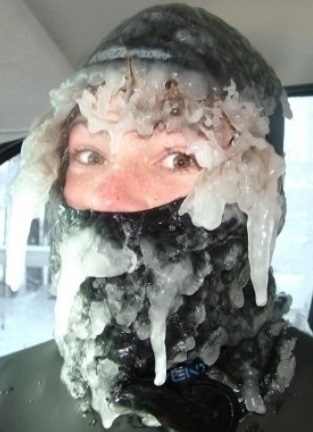It is turning into the winter without end – the year we learned a new term: ‘Polar vortex.’
Although the holiday season ice storm grabbed the most headlines, and slip and fall coverage is always at the forefront when it comes to liability, brokers should remind clients that the extreme weather can bring with it many more hazards than just icy sidewalks.
It may seem like common sense, but it is important to remind everyone of these simple safety precautions:
• Stay away from downed power lines;
• To prevent water from backing up during a thaw, keep snow and ice from piling up around drains and down spouts;
• Trim branches or trees that could break under the weight of heavy ice or snow and topple onto your home, car, or other property;
• Keep your house steps, walkways and driveway clear of snow and ice;
• Clear ice and snow away from outside vents and basement windows;
• Have a qualified company clear heavy amounts of snow and ice from rooftops;
• If a power line is in water, call your local hydro company immediately; and
• Keep in touch with family by text or mobile phone to ensure they are safe.
The death of a 52-year-old man and his 72-year-old mother in Newcastle, Ont. from carbon monoxide poisoning is an important reminder for brokers to make clients aware of the steps they should take in the event of a loss of power:
• Avoid opening doors unnecessarily. However, ensure adequate ventilation is maintained;
• Turn off and unplug all electrical appliances. This will prevent damage if there’s a power surge;
• Don’t leave lit candles or heaters unattended;
• If there is a danger of freezing pipes, turn off the main water valve and drain the line(s). Or turn taps on just enough to maintain a small stream of water. Put plumbing antifreeze in toilet bowls, sinks and bathtub drains. (continued.)
#pb#
Just as important is following a checklist once power is restored:
• Leave a light or radio turned on so you know when the power is back;
• Check your breakers if something isn’t working;
• Recharge cell phones and mobile devices first in case of a repeated power outage;
• Plug in essential appliances first, then wait 10-15 minutes before trying others;
• Avoid using power-hungry appliances such as dishwashers, washing machines, and dryers right after power comes on; large numbers of user can overpower the grid.
When the snow is falling, most of us make only necessary trips. But even a sunny day can become a blizzard when the wind picks up.
We can’t control the weather, but you can show your clients how to prepare the vehicle before pulling out onto the road:
• Check weather and road conditions before heading out on the road;
• Before driving, ensure you clear snow and ice from all windows, lights, mirrors, and the roof of your vehicle. Wait for the fog to clear from interior windows;
• Be cautious when pulling out of your driveway, as snow banks can impede your vision;
• Drive slowly and keep a safe distance behind the vehicle in front of you; and
• It is always wise to have an emergency kit in your trunk. The kit should include a flashlight and batteries, blanket, extra clothing and footwear, matches and a "survival" candle in a tin can (to warm hands, heat a drink, or use as an emergency light), non-perishable food and water bottles, a snow shovel, sand, extra windshield washer fluid and anti-freeze, hazard flares and booster cables.
People have busy lives – but brokers shouldn’t take this as a sign not to remind them of the necessary precautions that we should all take when Old Man Winter is doing his worst.
Have you noticed an increase in winter-related claims?


